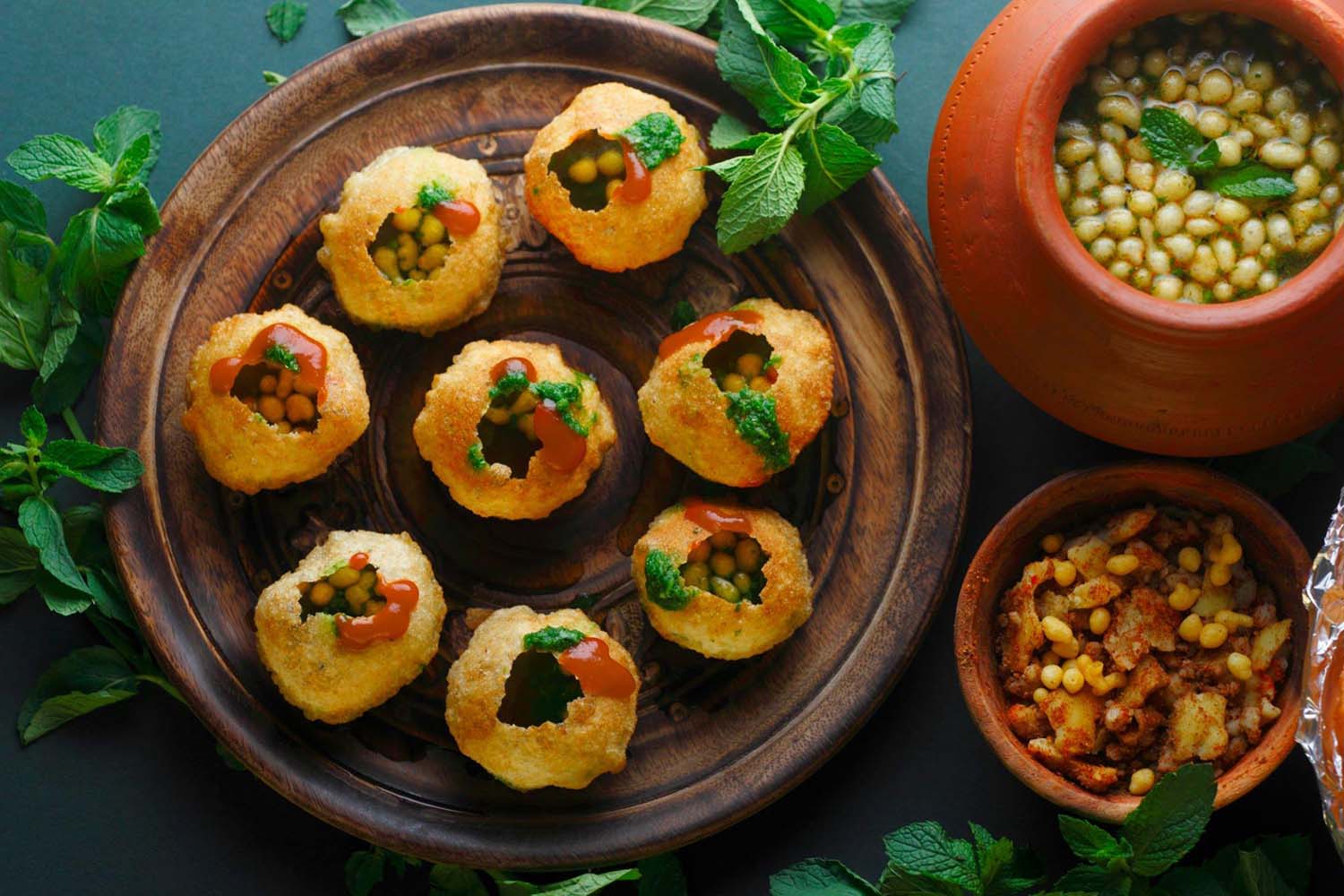Welcome, food enthusiasts and adventurous eaters! Get ready to explore the vibrant street corners of India and indulge in the delightful culinary experience of Pani Puri.
For those unfamiliar, Pani Puri might sound like a mystical elixir or a spell from a fantasy novel, but it’s actually a mouthwatering delight of Indian street food. Prepare your taste buds for a symphony of flavours, ranging from spicy to sweet and tangy!
Whether you’re a seasoned fan of Indian cuisine or a curious newcomer eager to discover new tastes, join us on an exciting journey as we unravel the magic of Pani Puri, one delicious bite at a time. By the end of this adventure, you’ll be a Pani Puri enthusiast, or what we affectionately call a certified ‘Purist’!
Are you ready? Let’s embark on a flavourful exploration into the world of Pani Puri…
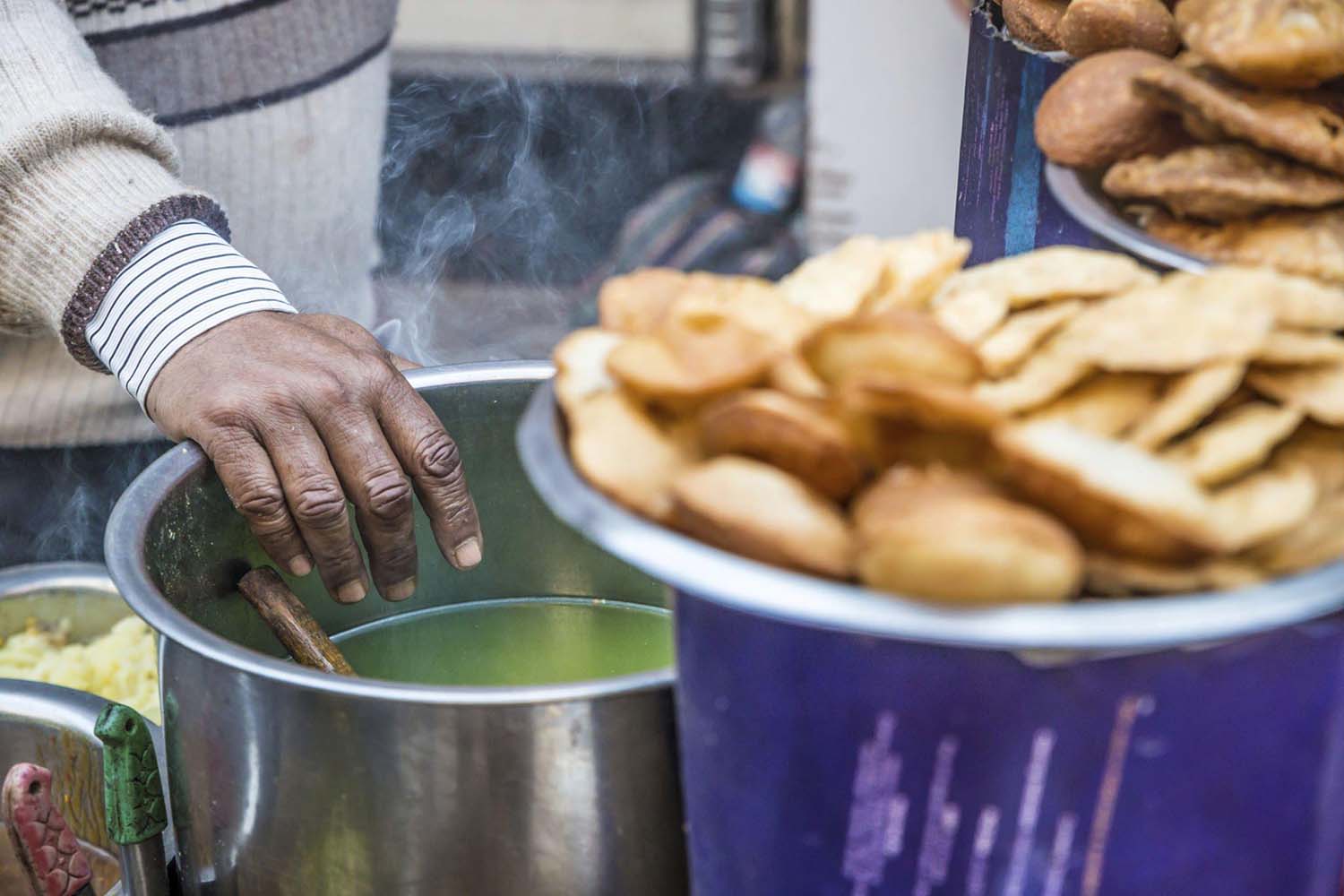
What Exactly is Pani Puri?
Pani Puri, also known as Golgappa in North India or Puchka in Bengal, is an iconic street food that’s loved across the entire Indian subcontinent. It is essentially a snack that consists of two main parts: the ‘Puri’ and the ‘Pani’.
‘Puri’: This is a hollow, crispy ball made out of semolina or wheat flour. It’s deep-fried until it puffs up, resulting in a crispy exterior and a hollow interior that can be filled with various ingredients.
‘Pani’: This word translates to ‘water’ in Hindi, but in the context of Pani Puri, it refers to a flavoured water that’s typically tangy and spicy. The pani is a blend of tamarind, mint, chilli, and a plethora of spices, and it’s what gives Pani Puri its signature kick!
In addition to the Puri and the Pani, there’s often a filling involved. This can range from mashed potatoes and chickpeas to sprouted lentils and more, often seasoned with spices. Some versions also include a sweet tamarind chutney.
To eat a Pani Puri, you crack a small hole in the top of the puri, stuff it with the filling, fill it with the pani, and then eat the whole thing in one bite. The explosion of flavours and textures—crunchy, soft, spicy, tangy, sweet—is what makes Pani Puri such a beloved snack in India.
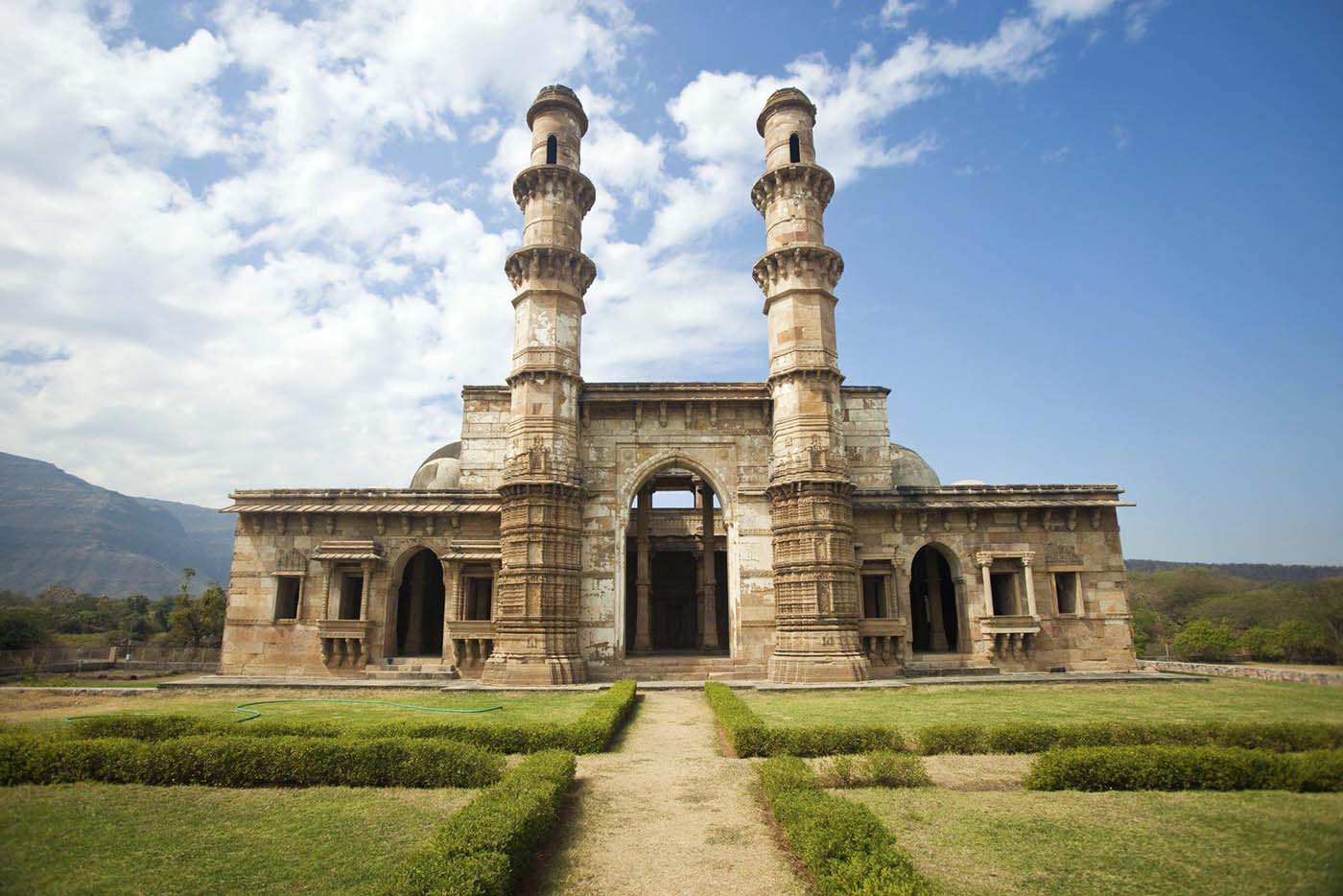
Where Does Pani Puri Come From?
Pani Puri has a history as rich and fascinating as its taste. The exact origins of this delectable snack are a bit disputed and shrouded in mystery, as various regions in India claim it as their own. However, let’s explore some of the most prominent theories.
Ancient Times: One theory suggests that Pani Puri originated during the era of the Mahabharata, an ancient Indian epic. It is said that Draupadi, a key figure in the epic, created the first Pani Puri when her mother-in-law asked her to make a dish using just a small amount of flour.
Magadh Kingdom: Some believe that Pani Puri was first prepared in the ancient kingdom of Magadh, one of the 16 Mahajanapadas (great countries) in ancient India. The kingdom, located in what is now Bihar, was known for its unique and varied culinary innovations.
Bengal: Others argue that Pani Puri, or ‘Puchka’ as it’s called there, originated in Bengal. They attribute the name ‘Puchka’ to the sound the crispy puri makes when eaten.
Gujarat: Yet another theory traces the origins of Pani Puri to Gujarat, where it’s believed to have emerged in the 19th century.
Regardless of its disputed origins, Pani Puri has transcended regional boundaries and has become a beloved snack all across the country and beyond. Its different regional variations carry unique names like ‘Golgappa’ in Northern India, ‘Puchka’ in Bengal, ‘Gupchup’ in Bihar and Jharkhand, and ‘Pani Puri’ in Maharashtra and other regions. It’s a testament to India’s rich and diverse culinary tapestry.
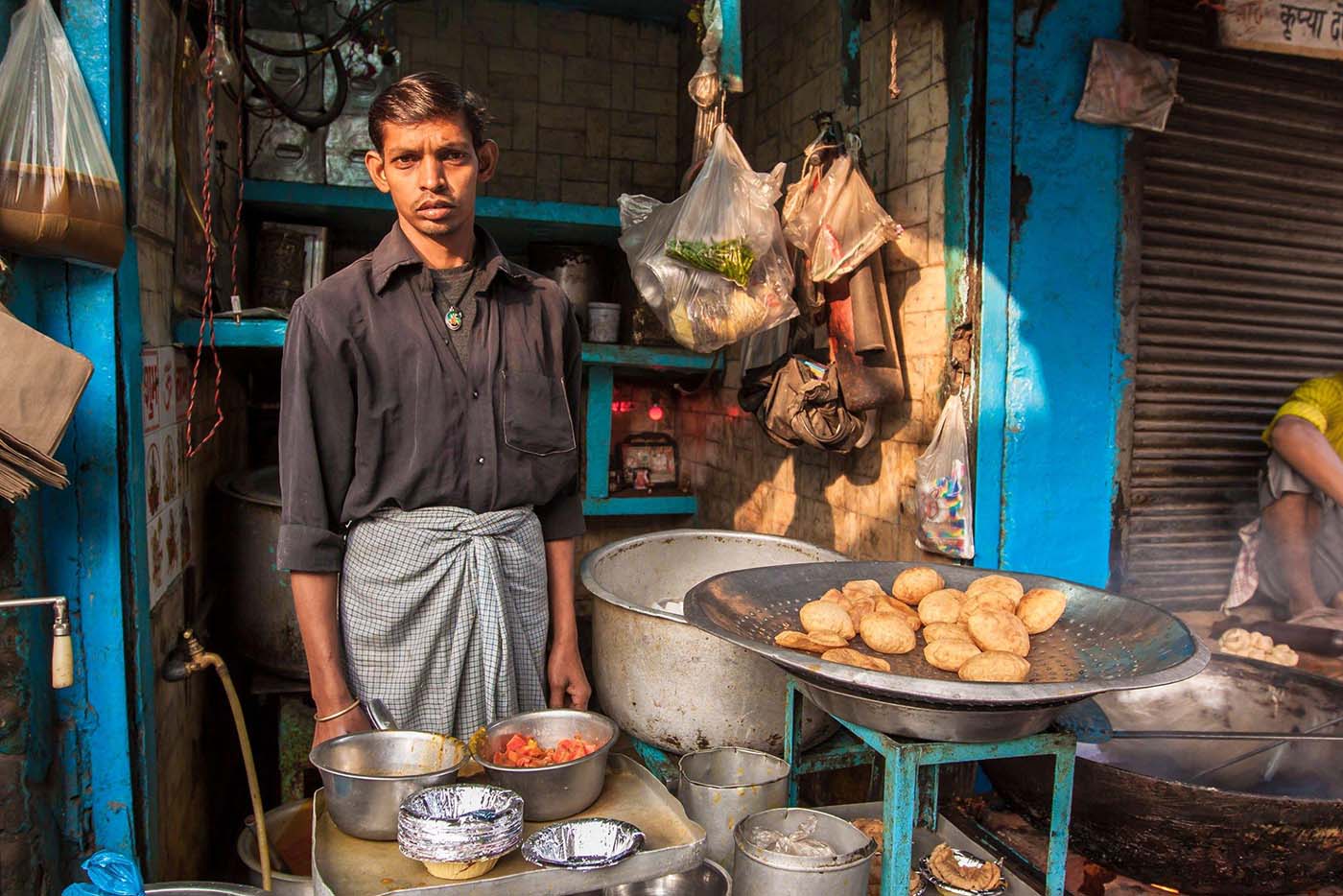
What is the History of Pani Puri?
The exact origin of Pani Puri is difficult to trace, as it is deeply ingrained in the cultural fabric of the region. However, it is believed to have originated in the Indian subcontinent, with some attributing its beginnings to the region of Uttar Pradesh.
Over time, different regions and communities have put their own spin on Pani Puri, resulting in variations in the fillings and flavours. In some places, the filling may include ingredients like sprouts, onions, or sweet chutney. Some regions also offer spicier versions of pani to suit local tastes.
Pani Puri gained immense popularity as a street food snack, as it is affordable, delicious, and provides a refreshing and satisfying experience. It has become an integral part of Indian street food culture, enjoyed by people of all ages across the country.
Today, Pani Puri has also gained recognition beyond South Asia, with many Indian restaurants around the world offering their own versions of this iconic street food. Its enduring popularity is a testament to its rich history and the delightful combination of flavuors it offers.
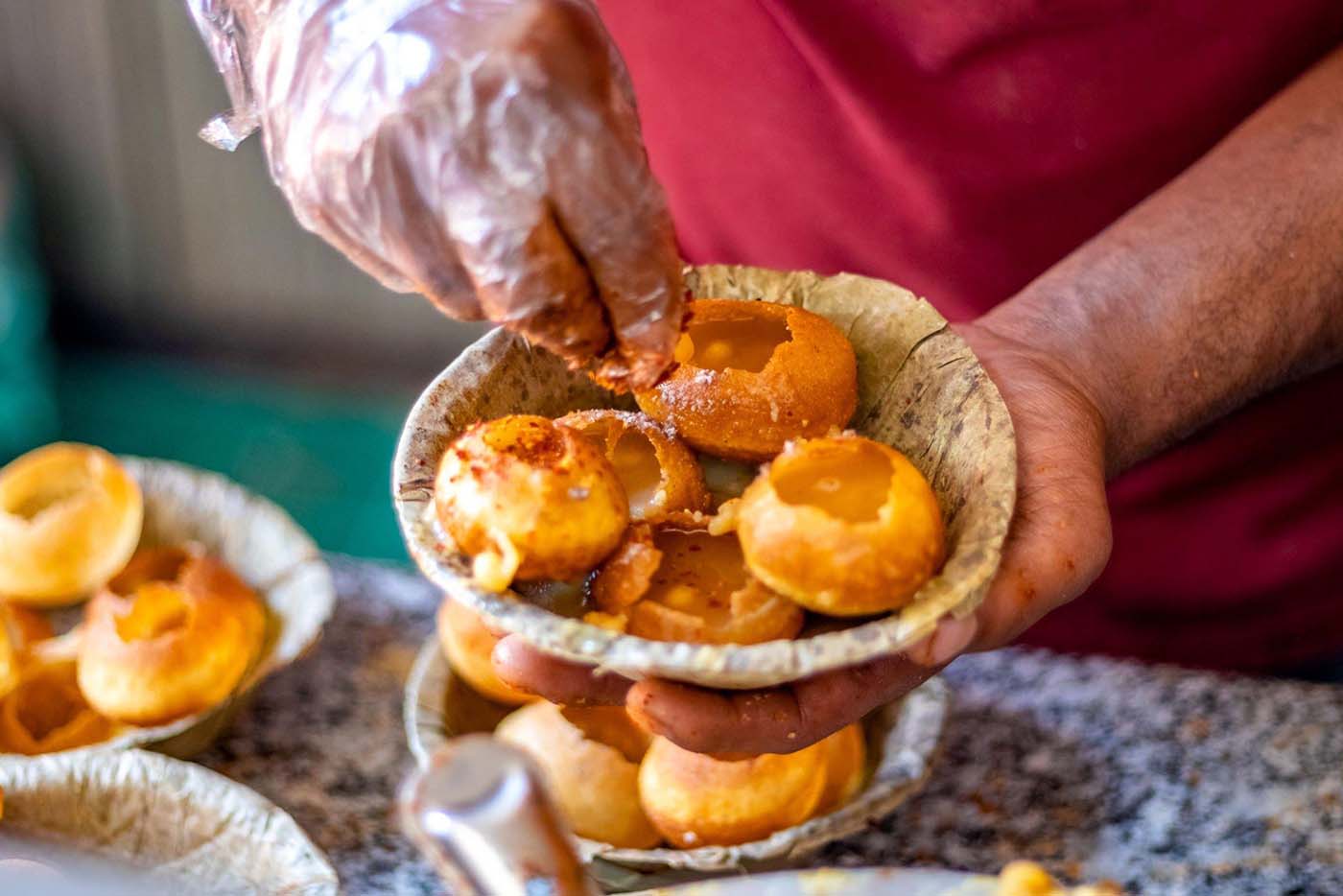
How Do You Make Pani Puri?
To make Pani Puri, you will need the following ingredients:
For the Puris (Shells):
— 1 cup semolina (sooji) or wheat flour
— Water for kneading the dough
— Oil for deep frying
For the Filling:
— Boiled and mashed potatoes
— Boiled chickpeas
— Chopped onions
— Tamarind chutney
— Mint chutney
— Chaat masala (optional)
— Sev (crispy chickpea noodles, optional)
For the Pani (Water):
— 1 cup mint leaves
— ½ cup coriander leaves
— 1 small green chilli (adjust to taste)
— 1 tablespoon tamarind pulp
— 1 tablespoon lemon juice
— 1 teaspoon roasted cumin powder
— 1 teaspoon black salt
— Salt to taste
— Cold water
Here’s a step-by-step guide to making Pani Puri:
Prepare the Puris:
— Mix the semolina or wheat flour with water to form a stiff dough.
— Divide the dough into small portions and roll them into thin, small circles.
— Heat oil in a deep pan and fry the puris until they turn golden brown and crispy.
— Remove them from the oil and let them cool.
Prepare the Filling:
— Mix the boiled and mashed potatoes with some chaat masala (optional) for extra flavor.
— Rinse and drain the boiled chickpeas.
— Chop the onions into small pieces.
— Set aside tamarind chutney, mint chutney, and sev.
Prepare the Pani:
— Blend mint leaves, coriander leaves, green chili, tamarind pulp, lemon juice, roasted cumin powder, black salt, and regular salt together to make a smooth paste.
— Add this paste to a bowl and mix it with cold water. Adjust the consistency and taste according to your preference.
Assemble the Pani Puri:
— Take a puri and gently crack it in the center to create a small hole.
— Fill the puri with a small portion of mashed potatoes and boiled chickpeas.
— Add a little chopped onion.
— Drizzle some tamarind chutney and mint chutney over the filling.
— Dip the filled puri into the prepared pani, or you can pour the pani into the puri using a spoon.
— Optionally, you can sprinkle some sev on top for added crunchiness.
Serve and enjoy:
Serve the Pani Puri immediately after assembling, as the puris tend to get soggy if left for too long.
Each Pani Puri is meant to be eaten in one bite, so pop it into your mouth and enjoy the explosion of flavours.
Remember, the proportions of ingredients and the flavours can be adjusted according to your taste preferences. Feel free to experiment and customize the Pani Puri recipe to suit your liking.
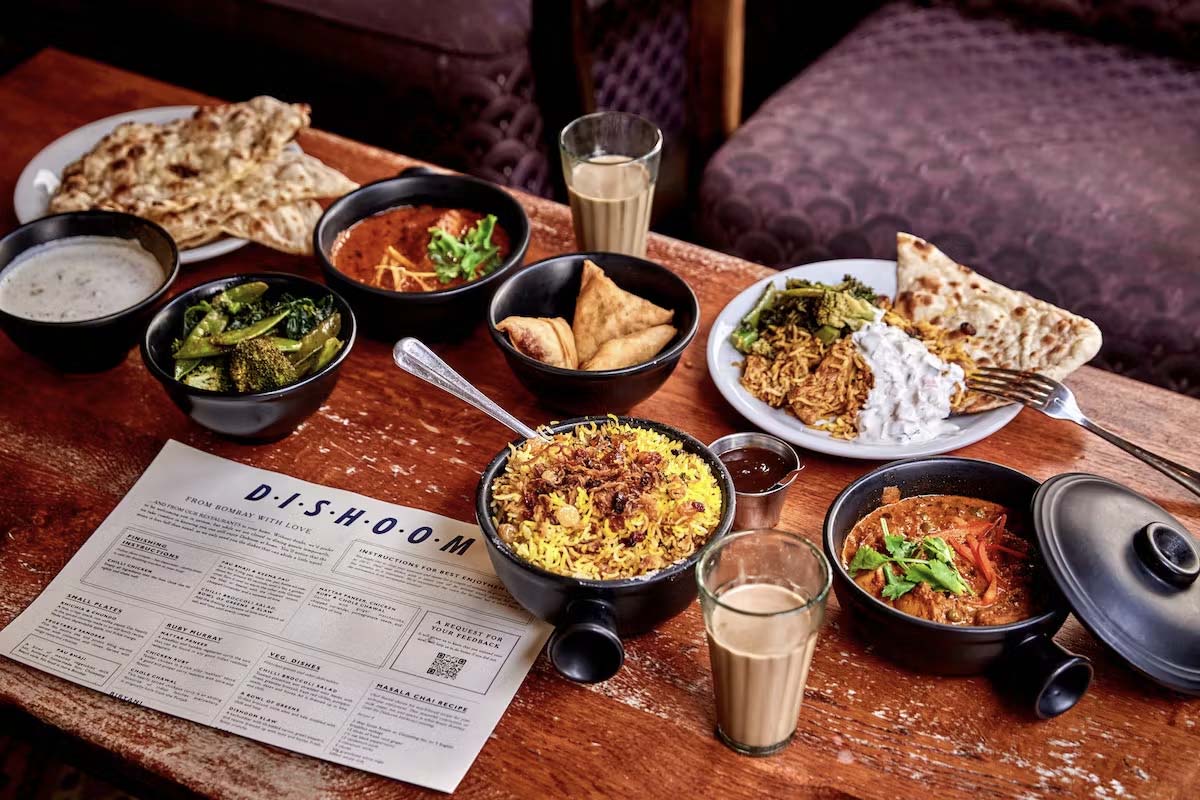
Where Can I Eat the Best Pani Puri in London?
Finding the “best” Pani Puri in London can be subjective as taste preferences vary from person to person. However, there are several renowned Indian restaurants and street food stalls in London known for serving delicious Pani Puri. Here are a few popular options:
Dishoom: Dishoom is a well-known Indian restaurant with multiple branches in London. They offer a delectable Pani Puri on their menu, known for its authentic flavours and high-quality ingredients.
Jai Krishna: Jai Krishna is a vegetarian South Indian restaurant located in Finsbury Park. They are known for their mouthwatering Pani Puri, among other delicious Indian snacks and dishes.
Kricket: Kricket is an Indian-inspired restaurant with branches in Soho and White City. Although they have a contemporary twist to their dishes, their Pani Puri is highly regarded for its unique flavours and presentation.
Gujarati Rasoi: Gujarati Rasoi is a street food stall located in Camden Market. They specialise in vegetarian Gujarati cuisine and serve tasty Pani Puri along with other traditional dishes.
Camden Market: Camden Market, a bustling street food market in London, offers a wide variety of food stalls serving international cuisines, including Indian street food. You can explore different stalls to find a Pani Puri vendor that suits your taste.
It’s always a good idea to check reviews, ask for recommendations from locals or friends, and explore different options to find the Pani Puri that suits your preferences. London’s vibrant food scene offers plenty of opportunities to discover delicious and authentic Pani Puri.
